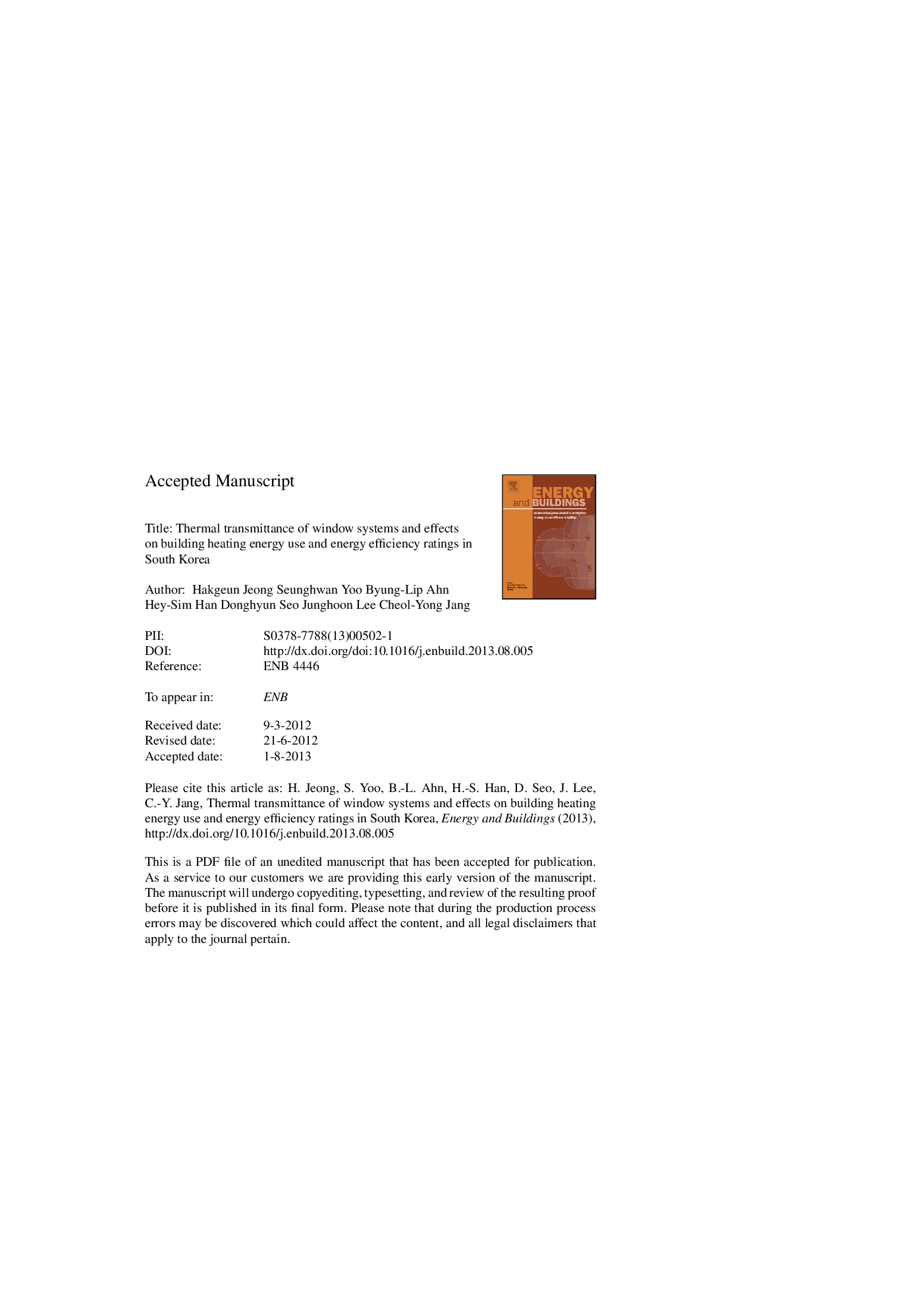| Article ID | Journal | Published Year | Pages | File Type |
|---|---|---|---|---|
| 6734365 | Energy and Buildings | 2013 | 30 Pages |
Abstract
Since ratification of the Kyoto Protocol, governments worldwide have announced energy policies to greatly reduce energy use and greenhouse gas emissions. The construction sector accounts for approximately 40% of global energy usage. Therefore, technological as well as political means have been employed to realize a reduction in energy consumption in this sector. High-efficiency window systems can play an important role in reducing energy consumption in buildings. We measured the thermal performance (U-factor) of different window systems and analyzed their effects on energy savings. All systems considered in this study helped improve insulating performance. Our results showed that the use of temperable, low-e glazed units helped achieve 19.9%, 17.1%, and 15.2% energy savings in the study areas in the central and southern regions in South Korea and in Jeju Island, respectively. Despite the great potential for energy savings in the central region, only half the buildings qualified for Rating 2 certification, whereas all buildings on Jeju Island qualify for the most energy efficient rating. This suggests that the energy efficiency ratings for buildings in South Korea are being applied to these three regions according to the regional building codes and climatic conditions.
Related Topics
Physical Sciences and Engineering
Energy
Renewable Energy, Sustainability and the Environment
Authors
Seunghwan Yoo, Hakgeun Jeong, Byung-Lip Ahn, Hyesim Han, Donghyun Seo, Junghoon Lee, Cheol-Yong Jang,
